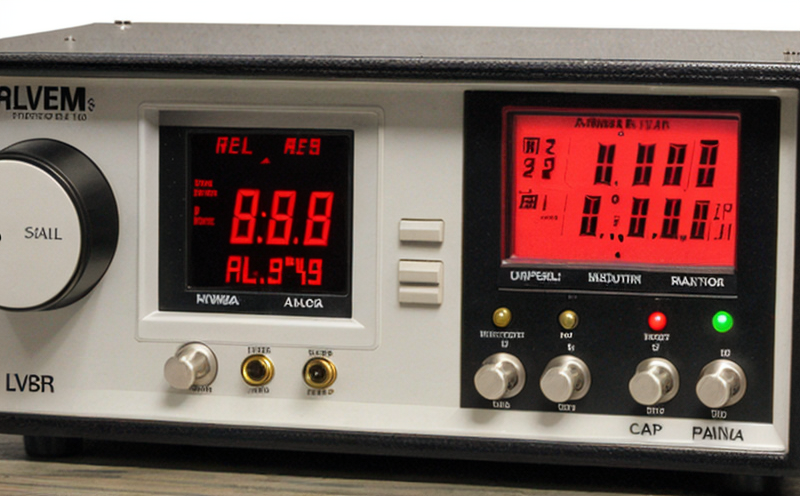ASTM E1255 Calibration of Environmental Radiation Detectors
The ASTM E1255 standard provides a comprehensive framework for calibrating environmental radiation detectors. This service ensures that instruments used in monitoring and detecting ionizing radiation are accurate, reliable, and compliant with international standards. The calibration process is critical for ensuring the safety and effectiveness of personnel and equipment involved in radiation detection.
The ASTM E1255 procedure involves several key steps to calibrate environmental radiation detectors accurately. These include setting up the calibration environment, selecting appropriate sources, performing the actual calibration procedures, and validating the results. The process is designed to ensure that the detectors provide accurate readings of ionizing radiation levels in various environments.
One of the most important aspects of ASTM E1255 calibration is the use of reference standards. These standards must be traceable to international standards such as ISO or NIST. The choice of standard sources directly impacts the accuracy and reliability of the calibration process. For instance, a detector calibrated using cesium-137 (Cs-137) will have different performance characteristics compared to one calibrated with cobalt-60 (Co-60).
The ASTM E1255 procedure also emphasizes the importance of proper specimen preparation and handling during calibration. This includes ensuring that the detector is properly positioned relative to the radiation source, and that all environmental factors are accounted for in the calibration process.
| Applied Standards | Description |
|---|---|
| ASTM E1255 Standard Practice for Calibration of Environmental Radiation Detectors | The standard defines procedures and practices for calibrating environmental radiation detectors to ensure accuracy, reliability, and compliance with international standards. |
| ISO 8479:1986 - Ionizing Radiation - Measurement of Dose Equivalent in the Environment | This international standard provides guidance on measuring dose equivalent in various environments. It is often used alongside ASTM E1255 to ensure comprehensive calibration. |
| NIST Traceability | Calibrations are traceable to NIST standards, ensuring accuracy and reliability of the calibration process. |
The ASTM E1255 calibration process also involves detailed quality checks and validation steps. These ensure that the detector readings are accurate and consistent over time. The procedure includes repeated measurements under controlled conditions to confirm stability and repeatability.
In addition, the service ensures that all personnel involved in the calibration process are properly trained and certified. This training covers not only the technical aspects of calibration but also safety protocols and emergency procedures. Ensuring the competence of personnel is a critical component of maintaining high standards in radiation detection.
The ASTM E1255 procedure is applicable to various types of environmental radiation detectors, including Geiger-Müller counters, scintillation detectors, and proportional counters. The specific calibration methods may vary depending on the type of detector being calibrated. For example, a Geiger-Müller counter requires different procedures compared to a scintillation detector.
The calibration process is particularly important in sectors such as nuclear power plants, medical facilities, and research institutions where accurate radiation detection is critical for safety and compliance. In these environments, any discrepancies in the readings could have serious implications for personnel health and environmental protection.
Why It Matters
The importance of ASTM E1255 calibration cannot be overstated. Accurate and reliable radiation detection is crucial for ensuring the safety of personnel, equipment, and the environment. Inaccurate readings can lead to overexposure to radiation or underestimation of potential hazards.
Calibration ensures that detectors are sensitive enough to detect low levels of radiation but not so sensitive as to produce false positives. This balance is critical in maintaining a safe working environment. For example, in nuclear power plants, accurate calibration can prevent unnecessary shutdowns due to false alarms, while ensuring that real incidents are promptly identified.
In medical facilities, accurate calibration is essential for patient safety and compliance with regulatory requirements. In research institutions, it ensures the validity of experimental results and supports the development of new technologies.
Compliance with ASTM E1255 standards also helps organizations avoid legal and financial penalties associated with non-compliance. Regular calibration and validation are required to maintain accreditation and ensure ongoing compliance with international regulations.
In summary, accurate radiation detection is a cornerstone of safety in various sectors. ASTM E1255 calibration ensures that detectors are reliable, accurate, and compliant with the highest standards. This service is essential for maintaining safe working environments and ensuring regulatory compliance.
Applied Standards
The ASTM E1255 standard is widely recognized for its comprehensive approach to calibrating environmental radiation detectors. The standard includes detailed procedures for setting up the calibration environment, selecting appropriate sources, and performing the actual calibration.
- ASTM E1255: Provides a framework for calibrating environmental radiation detectors to ensure accuracy and reliability.
- ISO 8479:1986: Offers guidance on measuring dose equivalent in the environment, often used alongside ASTM E1255.
- NIST Traceability: Ensures that all calibrations are traceable to NIST standards for accuracy and reliability.
The application of these standards ensures that calibration processes meet international benchmarks. This consistency is critical for maintaining high standards in radiation detection across various sectors.
Quality and Reliability Assurance
Ensuring the quality and reliability of calibrated detectors is a key aspect of ASTM E1255 calibration services. The following steps are taken to maintain these high standards:
- Detailed Documentation: Comprehensive records are maintained for each calibration process, including setup configurations, source details, and final results.
- Repeatability Checks: Multiple measurements under controlled conditions are conducted to ensure consistent and repeatable results.
- Safety Protocols: All personnel involved in the calibration process are trained and certified to follow strict safety protocols.
- Emergency Procedures: Detailed emergency procedures are outlined to respond to any unforeseen issues during or after the calibration process.
- Regular Maintenance: Regular maintenance checks ensure that detectors remain in optimal working condition between calibrations.
The combination of these steps ensures that calibrated detectors are not only accurate but also reliable and safe for use. This approach is crucial for maintaining high standards in radiation detection across various sectors.





